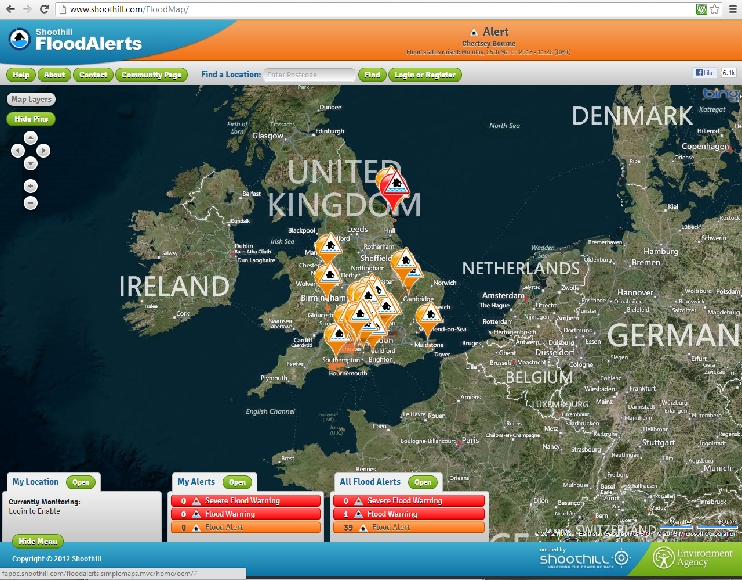The challenge
Flood managers, emergency services, industry and the public need to know beforehand where and when flooding will occur. Accurate early information enables flood defences to be operated, emergency services mobilised into the areas at greatest risk, industry and the public to be prepared, and the most vulnerable areas to be evacuated.
The solution
Working in partnership with the UK Met Office CEH and other research organisations have developed advanced systems to forecast the magnitude and duration of flooding across the UK. Using satellite and weather radar information, linked to telemetered rainfall and river flow monitoring equipment, and information about the land surface to forecast how high flood waters will reach along the UK’s main rivers. This has required understanding of the detailed meteorology within rainstorms of different types, better interpretation of weather radar data, and models of how water flows across the land and into streams and rivers. Water management organisations such as the EA and SEPA can then operate weirs, barriers and other flood defence structures to minimise danger to lives and property. In recent years the improvements in these real time flow forecasting systems have been focussed upon finer resolution analysis and prediction of rainfall patterns from weather radar, finer scale modelling of the flood plain and the different barriers to water movement, and better modelling of urban areas including the response of the drainage and sewer systems. Further information is available here.
Resulting benefits

A wider range of organisations benefit from flood forecasting systems. In the first instance, RFFS enable regulation authorities to manage flood events, and reduce the adverse effects that would occur in uncontrolled situation. For example, agencies like the EA, divert flood waters onto agricultural land and thereby protect towns and cities, or set up temporary flood protection barriers. RFFS systems also provide information to emergency services, and organisations such as the AA, to enable them to send response teams to areas of greatest risk. Through the media, smart phones, email alerts, etc the National Flood Forecasting Centre is able to warn the public about impending flood events. In December the Environment Agency launched its on-line real time flood warning system.
These warning are used by property owners, farmers, transport sector, and some recreation sports (kayaking, rowing, fishing, etc).
Future directions
RFFS systems will be developed to enable better response to convective storms and flash floods, inundation in urban and city environments, and will see the gradual improvement in th reliability of these forecasts at one to two days into the future.





Sources of funding
Foreign Governments – Belgium, India, Hong Kong.










 The Water Security Knowledge Exchange Portal supports the objectives of the
The Water Security Knowledge Exchange Portal supports the objectives of the 